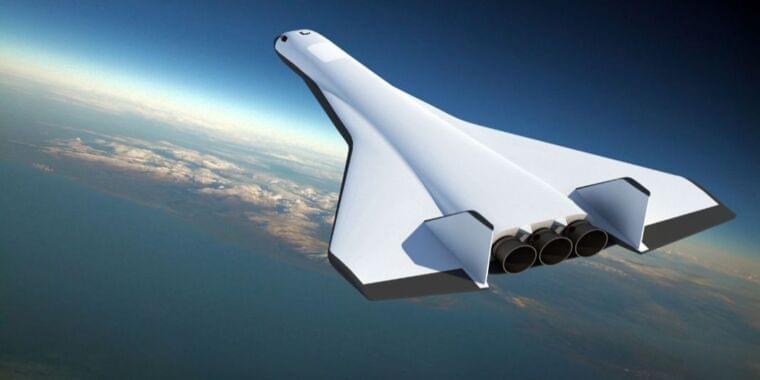Page 5203
Jan 23, 2022
30 Years Ago, Astronomers Discovered The First Exoplanet — And It’s Still Totally Bizarre
Posted by Atanas Atanasov in category: space
It got weird, fast.
And what about Wolszczan’s pulsar detection method? As precise as it is, shouldn’t it have revealed many such pulsar planets by now?
That’s the thing, according to Wolszczan. “I’ve been engaged with a number of long-term surveys, which were to search for millisecond pulsars and then look for planets around them,” he says, and while they’ve found a few objects around neutrons stars, they’ve found nothing like the PSR B1257+12 system. “That is the disappointing part of the whole story.”
Jan 23, 2022
Brain device records activity in record-breaking detail
Posted by Dan Kummer in categories: computing, media & arts, neuroscience
Beyond that, the ECoG technology could be developed for use in the emerging field of brain-computer interfaces, which have a huge range of potential applications – from controlling a computer just by thinking, to streaming music directly to your brain.
By uncovering new knowledge about how the brain works, for example, the device could be used to interpret hand motions in new ways utilising brain wave patterns.
Jan 23, 2022
2022: The Year in which Virtual Reality goes Mainstream
Posted by Dan Breeden in categories: computing, neuroscience, virtual reality

The Future of Virtual Reality has been shown at CES 2022 in the form of retina display VR Headsets, full body tracking solutions and brain computer interfaces previewing what the future of full dive virtual reality could look like. Companies such as Meta/Facebook, Google, Apple and Valve are all investing millions into making Virtual Reality mainstream and look just like real life.
–
TIMESTAMPS:
00:00 A vision into the Future at CES
00:50 Next Generation VR Headsets.
02:29 The Future of VR Hardware.
04:47 VR CPU’s & GPU’s.
07:00 Is the Future of VR Mainstream?
07:48 Last Words.
–
#virtualreality #vr #future
Jan 23, 2022
A Startup Completed the First Test Flight of Its Unique ‘CycloRotor’ eVTOL Prototype
Posted by Gemechu Taye in category: transportation
Jan 23, 2022
Scientists Perplexed to Find Something Under Saturn’s ‘Death Star’ Moon
Posted by Gemechu Taye in category: space
Jan 23, 2022
Why User Education Is Necessary To Avoid AI Failure
Posted by Gemechu Taye in categories: education, information science, internet, robotics/AI
The more a technology or concept permeates and gets normalized in our day-to-day lives, the more we grow to expect from it. About two decades ago, a sub-56kpbs dial-up internet connection seemed miraculous. Today, with internet speeds as high as 2000Mbps becoming normal, the 56Kbps connection would be considered a failure of sorts—in the developed world, at least. This shift in expectation also applies to AI. Having seen numerous practical AI applications aid human convenience and progress, both the general population and the AI research community now expects every new breakthrough in the field to be more earth-shattering than the previous one. Similarly, what qualifies as AI failure has also seen a massive shift in recent years, especially from a problem owner’s perspective. failure, in most cases, is attributed to technology-centric factors like the quality of data or the capabilities of algorithms and hardware used, ignoring the most crucial aspect of AI success—the end user.
Jan 23, 2022
Radian announces plans to build one of the holy grails of spaceflight
Posted by Genevieve Klien in category: space travel
A Washington-state based aerospace company has exited stealth mode by announcing plans to develop one of the holy grails of spaceflight—a single-stage-to-orbit space plane. Radian Aerospace said it is deep into the design of an airplane-like vehicle that could take off from a runway, ignite its rocket engines, spend time in orbit, and then return to Earth and land on a runway.
“We all understand how difficult this is,” said Livingston Holder, Radian’s co-founder, chief technology officer, and former head of the Future Space Transportation and X-33 program at Boeing.
On Wednesday, Radian announced that it had recently closed a $27.5 million round of seed funding, led by Fine Structure Ventures. To date, Radian has raised about $32 million and has 18 full-time employees at its Renton, Washington, headquarters.
Jan 23, 2022
Spaceship Neptune Is the Low-Tech, Cheaper Way to Reach the Edge of Space
Posted by Genevieve Klien in categories: cosmology, space travel
Science fiction literature is filled with strange ideas about how to travel to space and in it. We’ve got anything from hyperloops to wormholes and space elevators, strings, FTL-capable ships, and even the crown jewel of instant transport, teleportation. I know this because I really, really enjoy sci-fi.
Jan 23, 2022
Like ‘The 1929 Crash’—New Crypto Winter Warning As Sell-Off Wipes $1.5 Trillion From The Combined Bitcoin, Ethereum, Solana, BNB, Cardano And XRP Price
Posted by Genevieve Klien in categories: bitcoin, blockchains, cryptocurrencies
A new “crypto winter” could be around the corner after a huge crypto price crash has wiped $1.5 trillion from the combined cryptocurrency market —hitting bitcoin, ethereum, BNB, solana, cardano and XRP hard.
The bitcoin price has this week fallen to levels not seen since July last year, losing 20% over the last week and dropping to half its all-time high of almost $70,000. Other top ten cryptocurrencies ethereum, BNB, solana, cardano and XRP have all lost between 20% and 30% from their price this past week (with Wall Street giant JPMorgan issuing a stark ethereum price warning).

















